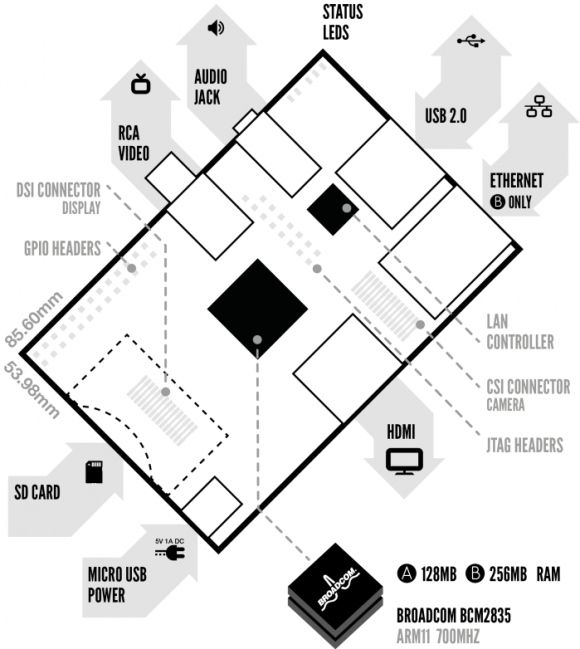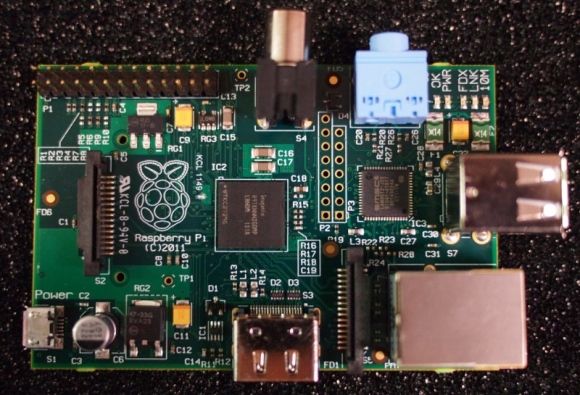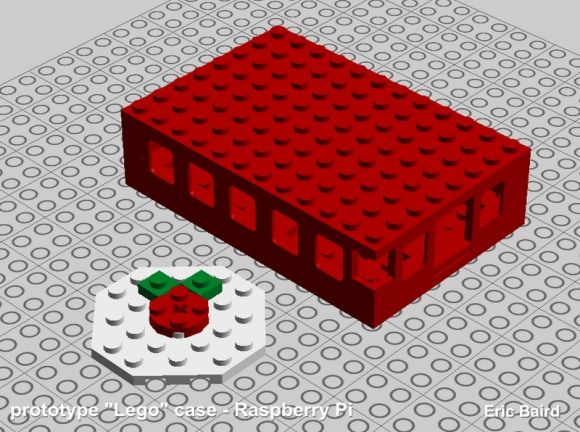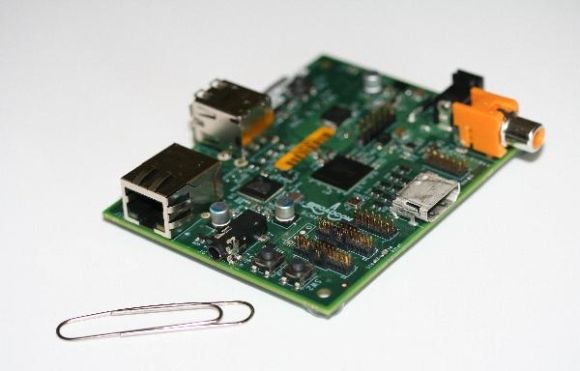Something big has been brewing in the university town of Cambridge, UK. For the past year a team of academics, businessmen, lecturers and programmers have been making final amendments to a very exciting project indeed.
Raspberry Pi is an ultra-affordable credit-card sized computer that will be finally making its way into the sweaty palms of excitable programmers, hobbyists and students come the end of February 2012. Best of all, the machine will only set you back $25 and packs some serious punch. Read on to find out why this charitable project is going to be huge.
The Raspberry Pi Foundation
Before we get into the nitty gritty of hardware, software and what will be possible once the Raspberry Pi (RasPi for short) is finally released it’s important to take a look at the project’s roots. RasPi was initially devised by Eben Upton in 2006 who saw a decline in computer science skills amongst applicants for Cambridge University while he was lecturing and working in admissions.
As a product of the British education system I can confirm that programming was not on the menu. Instead, we were taught basic word processing, spreadsheets and web design (using FrontPage Express, no less). Eben noticed that past applicants who had started programming on their Commodore 64s, Amigas and BBC Micro Computers of years gone by were much better versed in computer science than the Windows generation who were taught basic computer literacy and not pushed to learn to code. Huge drops in the numbers of applicants supported his theory that schools were not doing enough to encourage programming.
[embed]http://www.youtube.com/watch?v=pQ7N4rycsy4[/embed]
And so by 2008 the Raspberry Pi project had a highly respectable a board of trustees: David Braben (programmer and entrepreneur, best known for the holy grail of space sims, Elite), Jack Lang (local academic and businessman), Pete Lomas (hardware design and manufacture) and Alan Mycroft and Rob Mullins both from the University of Cambridge Computer Lab. The Raspberry Pi Foundation is a registered charity in the UK and the best way you can support them is by purchasing a unit. RasPi has been designed with education in mind, but that doesn’t mean it’s not suitable for other applications too.
Hardware, Software & Design
At the heart of every Raspberry Pi unit is the Broadcom BCM2835 system on chip (SoC) . It contains an ARM11 processor running at 700MHz with a powerful Videocore 4 GPU (which uses OpenGL ES2.0 and OpenVG libraries to deliver its impressive 3D performance). This provides roughly the equivalent to the original Xbox console’s grunt in graphical processing power (in real-world terms it’s closer to a Pentium II at 300MHz with considerably better graphics). Video-out is delivered via HDMI or composite (no VGA) and the unit is able to decode 1080p H.264 Blu-ray quality video at 30fps with sound over HDMI to boot.
There will be two versions of the RasPi - Model A ($25) comes with 128MB of RAM, a single USB 2.0 port and no Ethernet; Model B ($35) has 256MB of RAM, two USB 2.0 ports and a 100/10Mb Ethernet port. Due to the fact that the unit runs on ARM architecture (as opposed to x86 or x64 commonly found in PCs) it should be able to run all manner of software written for the platform provided the system requirements add up.
The initial batch of RasPi units will not ship with a case, power supply or SD card (the main storage medium your OS will reside on) in order to keep the cost down. A 5v micro USB power supply, cables and such will be available to ship at launch for an additional fee, and it’s great to be given the option as many of us have too many cables lying around already. According to the project website the unit will also comfortably run off 4xAA batteries for true portability.
As for a case: there are already many concepts and designs surfacing on the forum including two cases made from Lego, the “Iceberg” case and this concept with official cases coming in Q2. Integrating the RasPi into existing technology (a monitor, keyboard, unwanted electronics) also provides some exciting housing possibilities!
The Raspberry Pi will include support for Fedora (the recommended OS), Debian and ArchLinux from the get-go as these all come in ARM flavour. Ubuntu is currently not a viable solution as the ARM edition has been dropped and neither is the upcoming ARM version of Windows 8 unless Microsoft get on-board and help out. Python will be the officially supported educational programming language, but any code that compiles for ARMv6 will be supported.
Many of your favourite applications will compile and run on a Raspberry Pi, and it should be only a matter of time before they become available.
Real World Uses
The potential behind this project is huge due to the affordability, form factor and raw power provided by the units. To begin with, each RasPi is a fully functional computer with USB connectivity. You’ll be able to connect mice, keyboards, Wi-Fi dongles, external hard drives, game controllers and so on provided there are drivers; with USB hubs providing a solution to the lack of ports. Here are a few projects that are already undergoing investigation on the forums:
Media Streaming
Thanks to that powerful GPU that eats H.264 1080p for breakfast, the potential for a tiny media solution is there. XBMC is already working on pre-release units and support is only going to improve in the future. Connecting external storage via USB or streaming over Ethernet are two viable way of getting video content to your RasPi.
[embed]http://www.youtube.com/watch?v=PHlLnLqEBfg[/embed]
Gaming & Emulation
A dedicated emulation box is another exciting prospect, and there’s certainly enough grunt to get through a ton of classic systems, MAME and games. Quake III is one game that has been demoed on a pre-release Pi, and you can see how it stacked up in the video below.
[embed]http://www.youtube.com/watch?v=e_mDuJuvZjI[/embed]
Car Computer
Due to the small size and power requirements mounting a RasPi unit in a car for entertainment and navigation purposes (with a GPS unit) shouldn’t pose too much of a problem. Naturally, this wouldn’t be ideal when driving but for passengers it might help alleviate the boredom of a long journey.
Integrated Projects
Why not integrate your RasPi into an existing bit of kit? Televisions, keyboards, external hard disk enclosures, existing PCs and consoles or even retro kit like this NES integration project which aims to add a Raspberry Pi to an old Nintendo console without losing the NES functionality.
Time-Lapse Photography
Using a RasPi mounted on a dolly it would be possible to control a camera to expose at regular intervals.
Conclusion
By the time you read this there’s a good chance the Raspberry Pi will be shipping. Keep an eye on the home page for more news (you can also subscribe to the mailing list) or check the Raspberry Pi shop for the latest additions. The forum and wiki are also both excellent resources for more information. If you’re excited about this project or have any further ideas about how you would use one of these babies then let us know in the comments!





